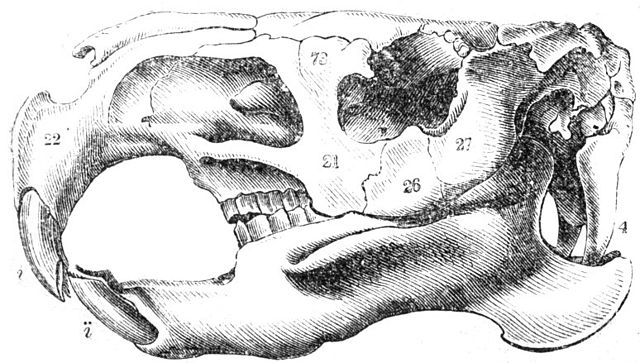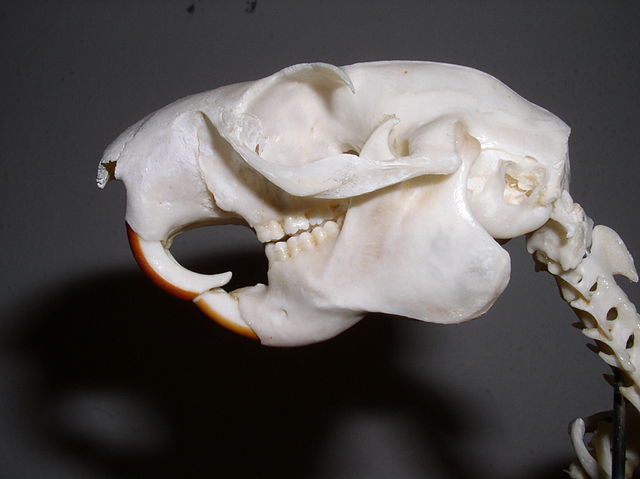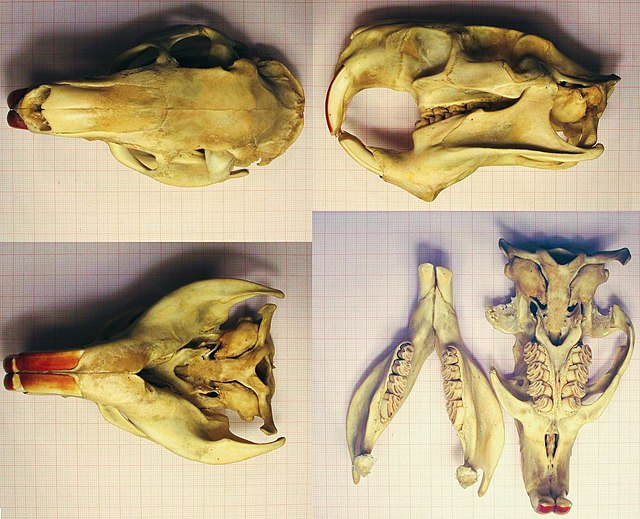Hystricomorpha is a term referring to families and orders of rodents which has had many definitions throughout its history. In the broadest sense, it refers to any rodent with a hystricomorphous zygomasseteric system. This includes the Hystricognathi, Ctenodactylidae, Anomaluridae, and Pedetidae. Molecular and morphological results suggest the inclusion of the Anomaluridae and Pedetidae in Hystricomorpha may be suspect. Based on Carleton & Musser 2005, these two families are discussed here as representing a distinct suborder Anomaluromorpha.
Hystricomorpha
Cranium of a capybara showing the enlarged infraorbital canal present in most members of the Hystricomorpha: This condition is termed hystricomorphy.
The zygomasseteric system in rodents is the anatomical arrangement of the masseter muscle of the jaw and the zygomatic arch of the skull. The anteroposterior or propalinal (front-to-back) motion of the rodent jaw is enabled by an extension of the zygomatic arch and the division of the masseter into a superficial, lateral and medial muscle. The four main types are described as protrogomorphous, sciuromorphous, hystricomorphous, and myomorphous.
Skull of an oriental giant squirrel. Note the classic sciuromorphous shape of the anterior zygomatic region.
Skull of a nutria demonstrating the hystricognathous lower jaw and hystricomorphous zygomasseteric system.
Gerbil skull displaying the myomorphous condition





